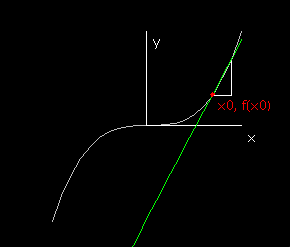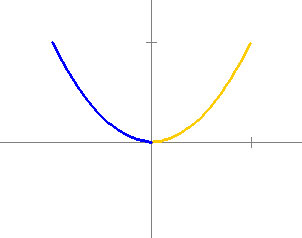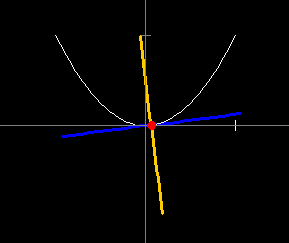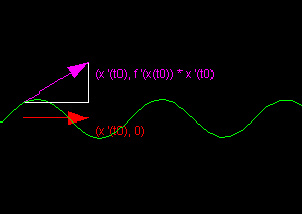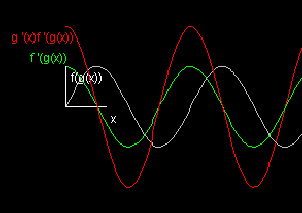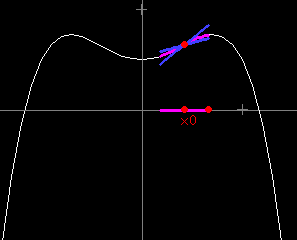For any non-zero number h, the line through (x0,f(x0)) and (x0+h,f(x0+h)) will have slope (1/h)(f(x0+h)-f(x0)) and the condition for the existence of this tangent line is that the limit as h goes to zero of (1/h)(f(x0+h)-f(x0)) = f’(x0), a well-defined real number.
In terms of an epsilon-delta definition, we say that f is differentiable at x0 if there is a number f’(x0) so that fore every ε > 0 it is possible to find a δ such that
|(1/(x-x0))[f(x) – f’(x0)(x-x0) – f(x0)]| < ε if |x-x0| < δ.
If f’(x0) exists for every x0 in the domain of f, then f is said to be a “differentiable function”. Then f’(x) is a new function derived from f(x), called the “derivative of f at x”.


